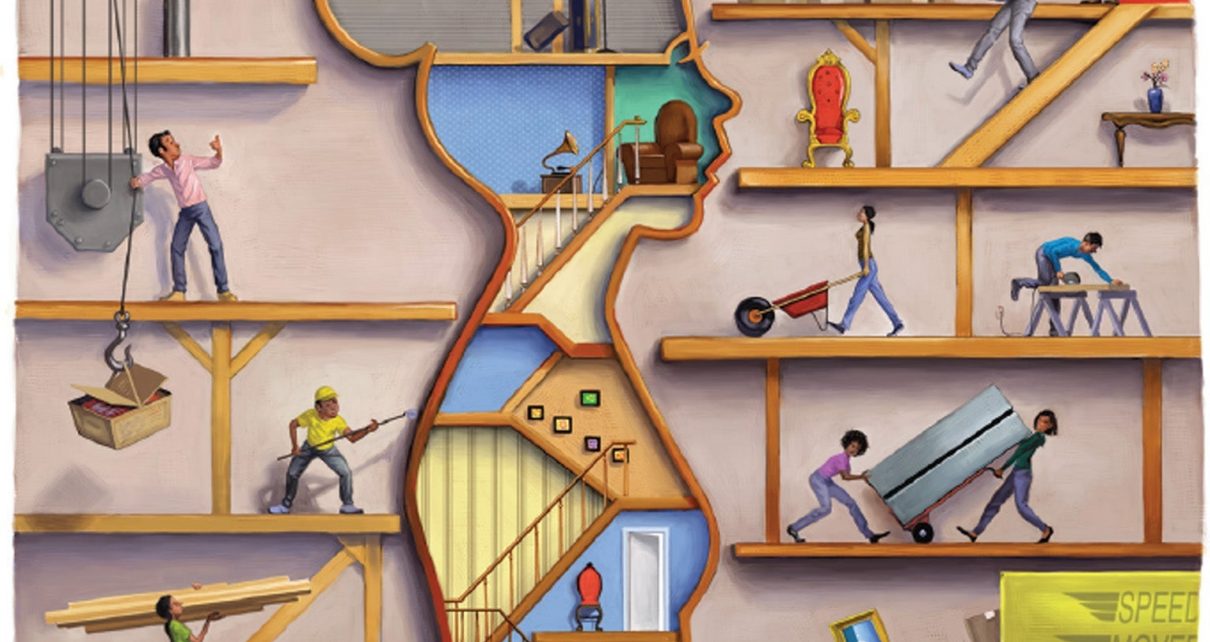When COVID-19 hit the U.S., most of us became homebodies. Journalist Emily Anthes was thus propitious in the timing of her new book, The Great Indoors: The Surprising Science of How Buildings Shape Our Behavior, Health, and Happiness (Scientific American/Farrar, Straus and Giroux). You may distract yourself from cabin fever by learning about the cabin.
Actually, the work covers a wide variety of indoor situations. One chapter looks at architectural design that encourages exercise. For example, apartment building planners stumbled on this shocking strategy: to get people to use the stairs more, make the stairwells wider and well lit. You know, nicer to use.
Another entry analyzes ways to contend with flooding, namely, throw in the towel: build homes with “buoyancy blocks” that absorb H2O. The blocks then—get this—expand and lift the house. Just be careful walking out the front door.
Other parts of the book deal with prisons, hospitals, offices, smart homes, housing for neurodiverse people, and even living spaces in space. For instance, the Russian part of the International Space Station has a greenhouse for testing off-planet agronomy. Gardening in orbit seems to be a mood enhancer and could lead to asteroid belt borscht.
All fascinating stuff, but it was the material in the chapter “The Indoor Jungle” about dwellings, the walls of which we’ve been staring at for months, that really grabbed me by the throat. Or maybe the armpit. A study found that homes with more women than men had a lot of Lactobacillus bacteria, “a major component of the vaginal microbiome.” The same study revealed that where men were in the majority, homes had bacteria that thrive in the gut, on the skin and in armpits. I just felt a great disturbance in the force, as if thousands of readers suddenly cried out in terror and ran to open up a window.
Living indoors inevitably means sharing our habitats with such human-associated microbial communities. Anthes mentions a 2016 study in the Amazon basin that sampled homes in communities ranging from a remote village to Manaus, with a population of more than two million. The open-air thatched huts of the village contained mostly bacteria found on and in soil, water and insects. Bacteria in the city residences were mostly those found on, and in, us.
In a footnote, Anthes also notes that wild animals, notorious for their lack of constructed walls and ceilings, leave barely a trace of themselves in their homes, microscopically speaking. She quotes North Carolina State University ecologist Rob Dunn, who took part in the surveys already mentioned and who also studied what you would expect to be a particularly ripe objet d’ooh ooh ah ah: “Chimp nests are all environmental microbes. You can’t tell a chimp has ever been there.” Well, not by the bacteria, anyway.
Anthes rounds up a lot of research demonstrating that the right home microbe mix can promote health. For example, kids who grow up on farms or with dogs have some protection against asthma, probably because the animals’ microbes train the young immune systems. Homes without such microbes leave us less prepared for the challenges that arise when a tiny troublemaker does find our warm, moist bodies.
Big bacterial differences exist even among farming communities. A 2016 New England Journal of Medicine study found that the Hutterites, who use modern agricultural methods, have more than four times the childhood asthma rates of the Amish, who still plow with horses. Amish kids have more infection-fighting white blood cells than do young Hutterites, whereas the latter group outpaced the former in cells involved with allergic reactions. The root cause can be found all over the root cellar: the dust in Amish homes contained more bacterial molecules than did the Hutterites’.
Anthes includes a prescription for a healthful home microbiome: “Keep things dry. Forgo cleansers, textiles, and materials that contain added antimicrobials. Open a window. Get a dog. (Or, if you can swing it, a cow.)” That’s no bum steer.




